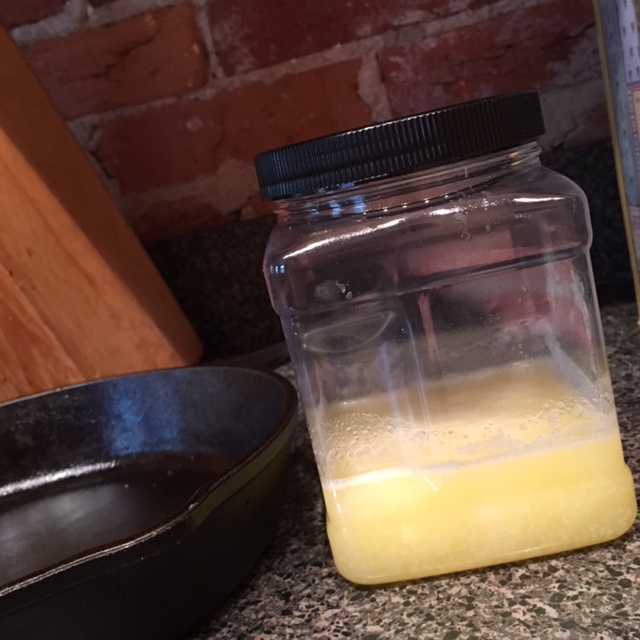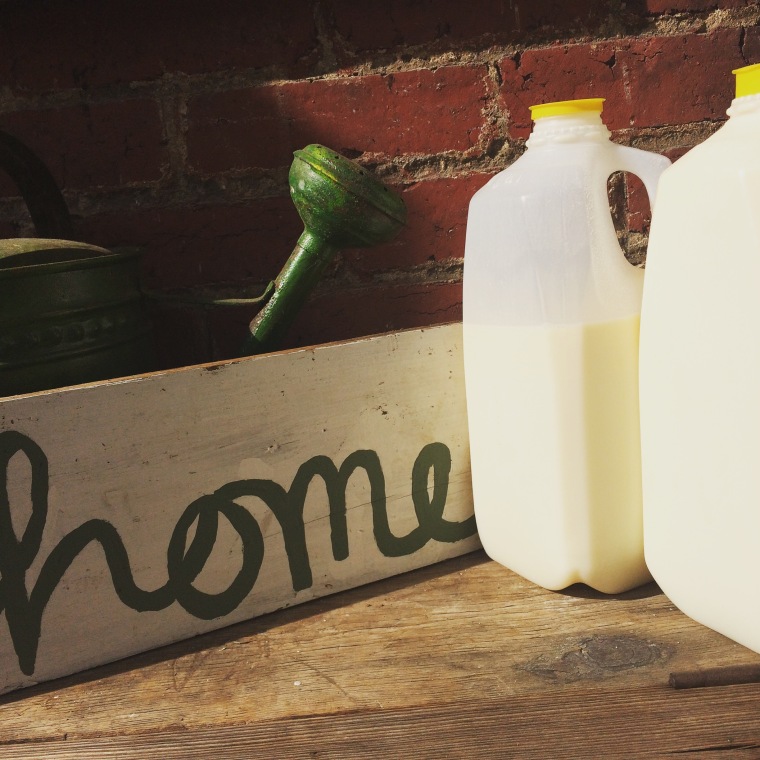A friend of mine eats ghee with every meal. I used to feel sorry for her, considering ghee to be nothing more than a poor substitute for butter. I knew next to nothing about it, truth be told, but was somehow under the impression that she had been simply swept up in some new foodie trend.
Little did I know that ghee is simply the fat part of butter (i.e., clarified butter) and that it has been made and consumed for thousands of years, particularly in India and Asia! Its health benefits are well-documented in ancient Sanskrit textbooks, and more and more people are rediscovering its benefits today. It is replete with vitamin A which benefits, among other things, our eyesight, and it has other properties that are rejuvenating, increase our longevity, and strength and immunity. Not only is it beneficial but it also is a vehicle, helping other nutrients get assimilated more easily into our body.

Sandeep Agarwal is from India, where ghee is used liberally. He is an expert on the subject. His great-great-grandfather even started a ghee business in 1889. But living in the U.S., he had bought into the U.S. public health recommendations that saturated fat was to be avoided, so he shunned ghee and other fatty foods. But when his young son began to struggle with a health crisis, Sandeep began searching for an answer to resolve his health. This is when he came upon the Weston A. Price Foundation. And when he began applying the Wise Traditions principles to his family’s diet, he saw his son’s health improve and that’s when he began to realize that he needed to get back to his own roots.
Today he embraces ghee…and fat…and raw milk, along with other organic, natural foods and spices. He is a graduate of David Winston’s Center for Herbal Studies’ two-year herbalist training program and one-year graduate program. He has spoken at Ayurvedic conferences in the USA and India. He is passionate about helping everyone to learn about the benefits of eating organic, healing, natural, traditional foods.
Listen to our conversation “On fat, raw milk, & ghee,” and you will learn:
- the changes he made to his family’s diet that improved his son’s health
- the process for making ghee
- the benefits of ghee
- the chemical composition of butter and of ghee, and how they compare
- why ghee is a good choice for people with dairy sensitivities and for those on the GAPS diet
- what the ancient texts say about raw milk and other healing practices
- about Ayurveda, the ancient Indian healing science which is 5000 years old and about its textbooks (written in Sanskrit)
- the concept of ojaf (immunity) in ayurvedic tradition
- how and why he and his wife started their PureIndianFoods business
- how ghee is a top food recommended for immunity-boosting
- why he believes ghee is growing in popularity as a “fat of choice”
If none of this convinces you to try ghee, you just need to give your tastebuds the treat! I’ve bought this huge tub and started cooking with it like there’s no tomorrow. (But, of course, there will be a tomorrow, thanks to ghee’s longevity-enhancing properties.)
***
Hilda Labrada Gore is a health coach and the host of the Wise Traditions podcast (found on iTunes, Stitcher, iHeartRadio and at westonaprice.org). She is also the DC chapter leader for the Weston A. Price Foundation. Get to know Hilda and her approach to health by visiting her website chispainc.com.





